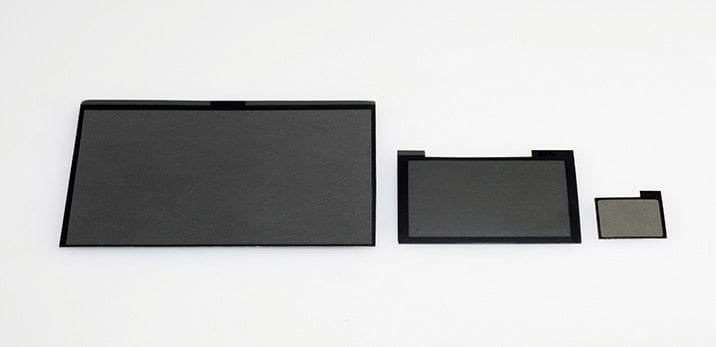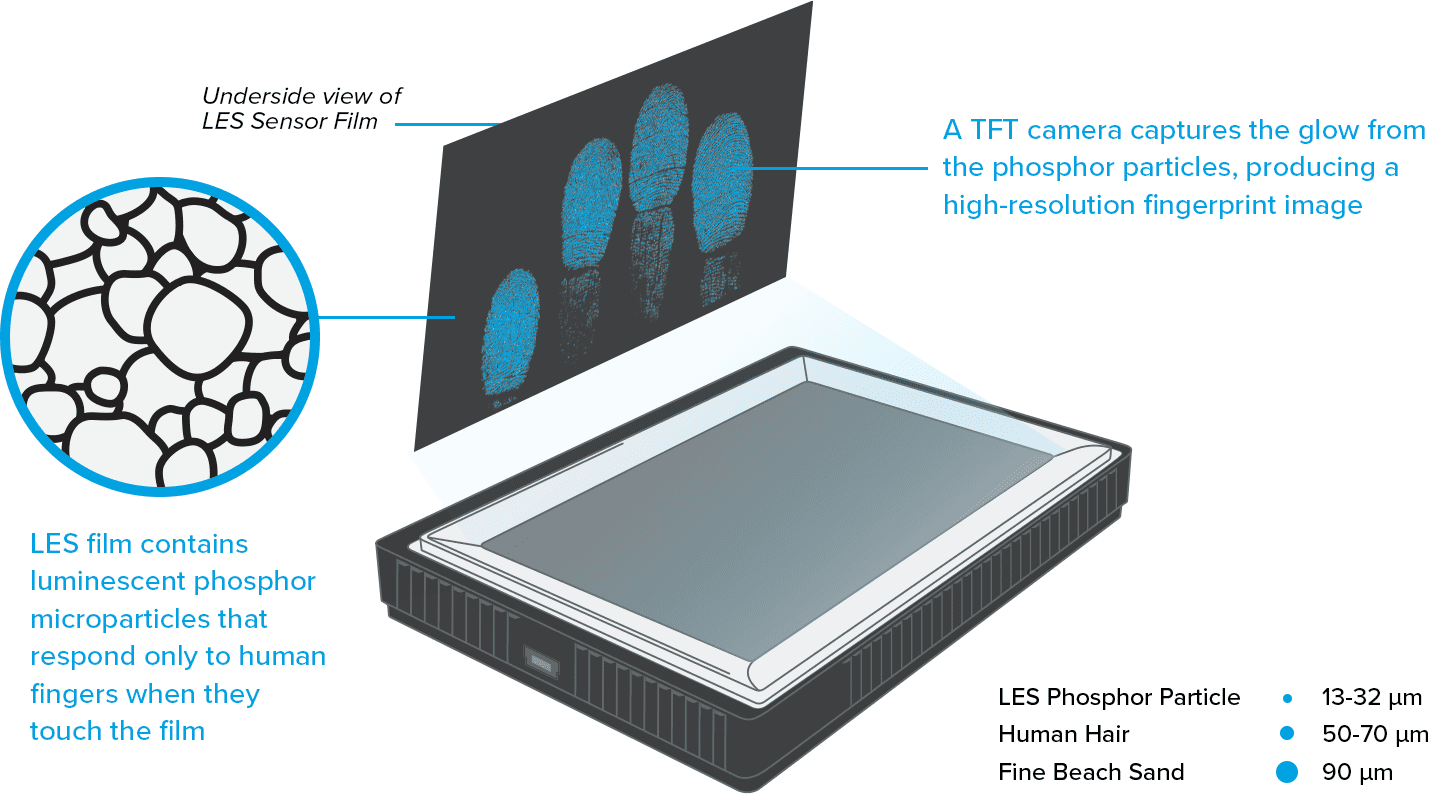Integrated Biometrics develops and manufactures FBI-certified fingerprint biometric scanners that utilize durable, patented light emitting sensor (LES) film. This unique, patented technology enables our world-class fingerprint solutions to work in direct sunlight on dry or moist fingers and resist abrasion.

LES technology is the only biometric technology that can meet the stringent image performance requirements of the FBI in a “thin” form factor (less than 1 mm thick). Whether integrating with smartphones, tablets, or other mobile solutions, LES fuels the smallest and lightest forensic quality roll scanners available in the market today, 90-95% smaller and lighter than traditional optical scanners.

…the most important groups are manual laborers — whose fingerprints tend to wear off from excessive use of their hands—and children, whose fingerprints are not fully developed or undergo changes with development; as well as the disabled or amputees. These challenging cases require adopting exception‐handling protocols (which may be relevant for 1 to 2 percent of the population) in order to ensure total inclusion. Exception handling for biometric capture may include the use of: newer fingerprint scanners based on thin film imaging devices (e.g., light emitting sensors) instead of traditional optical sensors. – World Bank
Access more details about our LES film via the FAQ below. If you have technical or other questions about LES film or any of our biometric fingerprint solutions, please call +1 888 840-8034 or email info@integratedbiometrics.com.

